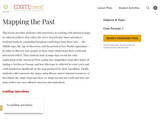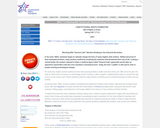
This map series contains 16 animated historical maps related to the ancient Greek empire.
- Subject:
- Social Studies
- Material Type:
- Interactive
- Provider:
- The Map as History
- Date Added:
- 04/06/2017

This map series contains 16 animated historical maps related to the ancient Greek empire.

This map series contains animated historical maps related to decolonization.

This map series contains 23 animated historical maps related to European history.

This map series contains 19 animated historical maps related to European history in the early 20th century.

This map series contains 16 animated historical maps related to European history after WWII.

This map series contains animated historical maps related to colonial expansion and imperialism.

This map series contains animated historical maps related to the spread of Christianity.

This map series contains animated historical maps related to the country of India since the end of WWII.

This map series contains animated historical maps related to the ancient Roman empire.

This map series contains animated historical maps related to European exploration.

This map series contains animated historical maps related to the Cold War.

This map series contains 20 animated historical maps related to WWI.

This map series contains animated historical maps related to the Middle East.

This map series contains animated historical maps related to trading networks and the spread of powerful empires.

This map series contains 15 animated historical maps related to WWII.

In this activity, students work with a series of maps related to the Middle East during World War I.

This lesson provides students with experience in working with historical maps as cultural artifacts that reflect the views of particular times and places. Students begin by examining European world maps from three eras -- the Middle Ages, the Age of Discovery, and the period of New World exploration -- in order to discover how people of those times understood their world and interacted with it. Then students look at maps that record the early exploration of the American West, noting how mapmakers kept alive hopes of finding a Northwest Passage and how this hope is reflected in what Lewis and Clark marked as significant on the map produced by their expedition. Finally, students collect present-day maps, using library and/or Internet resources, to investigate the range of perspectives we adopt toward our world and how our maps reflect our own cultural concerns and aspirations.

In this lesson, students explore the political environment in England during the years that Thatcher was Prime Minister. Discussion questions are provided. In an associated activity, students will analyze excerpts from two speeches, one from Thatcher and the other from Labour Party leader Neil Kinnock.

In this lesson, students read about how English cloth workers of the early 1800s revolted by smashing machines and created a fictional figure named General Ludd as the leader of their movement. A set of discussion questions is provided. In an associated activity, students brainstorm and make a list of the most important technological breakthroughs of the 20th century and discuss positive and negative consequences of each breakthrough's use.

In this lesson, students explore the history of the development and implementation of the Marshall Plan. Discussion questions are provided. In an associated activity, students consider the war on terror in the world today and determine what the priorities of the United States should be in providing foreign aid.